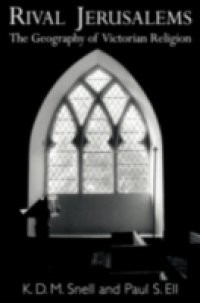This pioneering book is based upon very extensive analysis of the famous 1851 Census of Religious Worship and earlier sources such as the 1676 Compton Census. The authors stress contextual and regional understanding of religion. Among the subjects covered for all of England and Wales are the geography of the Church of England, Roman Catholicism, the old and new dissenting denominations, the spatial complementarity of denominations, and their importance for political history. A range of further questions are then analysed, such as regional continuities in religion, the growth of religious pluralism, Sunday schools and child labour during industrialisation, free and appropriated church sittings, landownership and religion, and urbanisation and regional 'secularisation'. This book's advanced methods and findings will have far-reaching influence within the disciplines of history, historical and cultural geography, religious sociology and in the social science community general.

